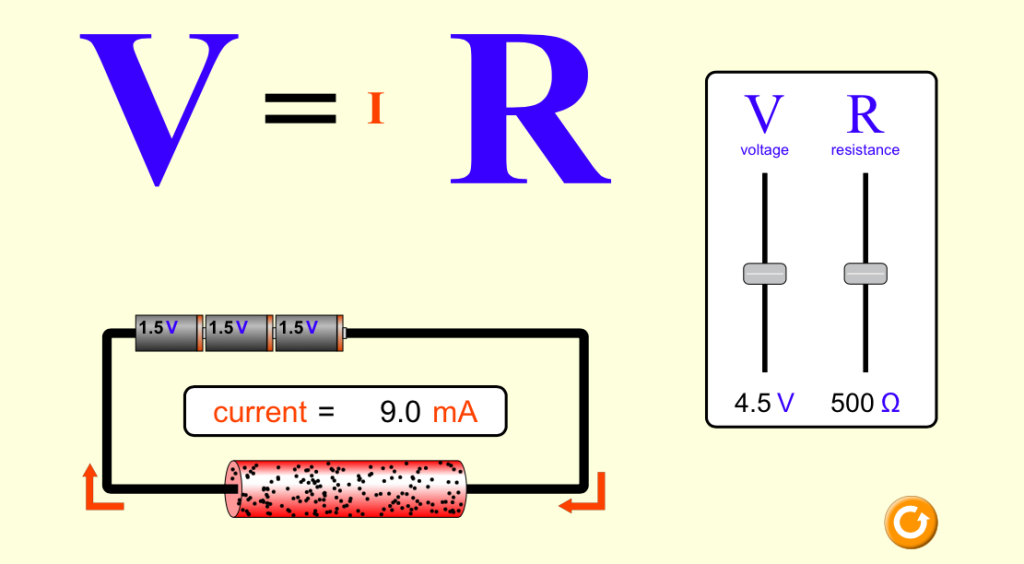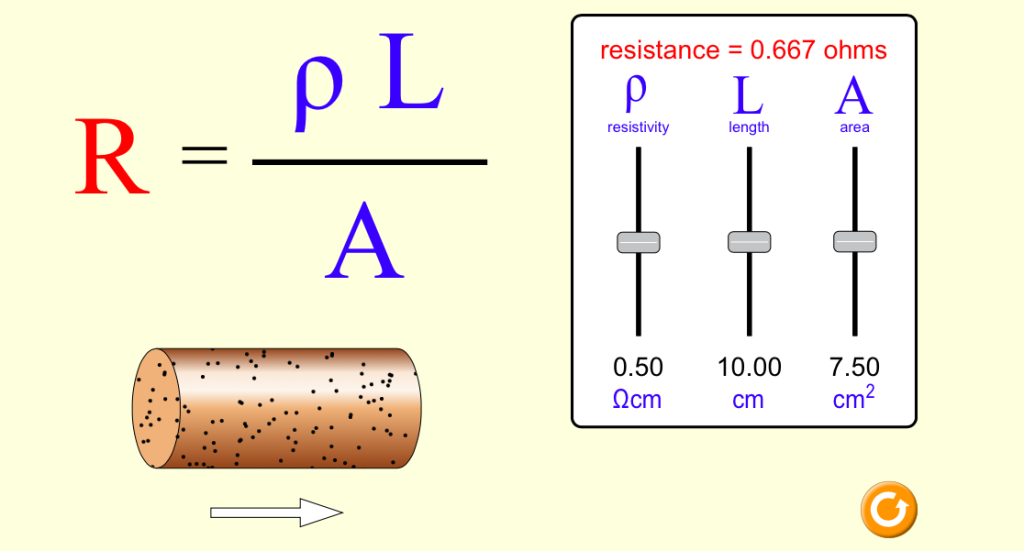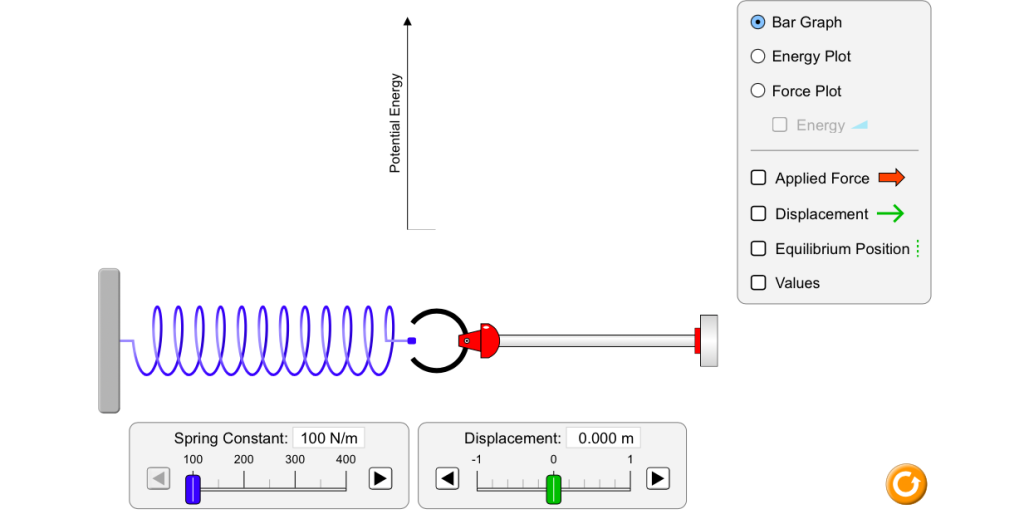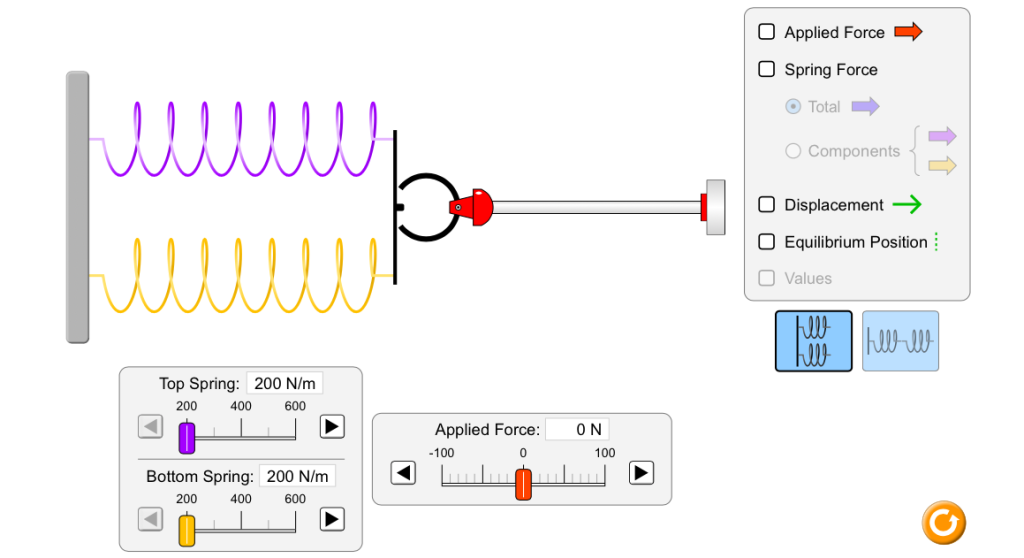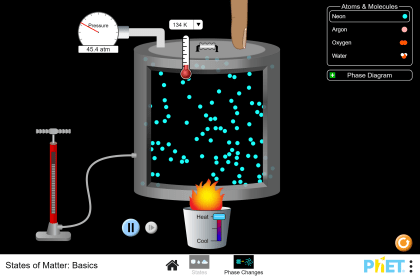Hooke’s Law by PhET Interactive Simulations, University of Colorado Boulder, licensed under CC-BY-4.0 (https://phet.colorado.edu) The title of the project: Systems of springs Purpose of the work: Expected results: Practical part To start the virtual experiment choose “Systems”. The virtual lab looks as follows. Part 1. Parallel connection Step 1. Take 2 springs connected in parallel and apply some force. Step 2. Notice that the displacements for both springs are the same. Step 3. Change the spring’s constant of one spring. Note that the elastic force of each spring is different since the spring’s constant is different. Step 4. Notice that the total elastic force of the system is the sum of elastic forces of each spring. Step 5. If you use Hooke’s law and the statements above, you can derive the total spring constant of the system, which is the sum of each springs’ constants. Part 2. Series connection Step 1. Take 2 springs connected in series and apply some force. Step 2. Change the spring’s constant of one spring. Notice that the displacements in series connection are different, but the elastic forces are the same for both springs. Step 3. The total elastic force of the system is the same as the elastic force of each spring’s elastic force, which are also the same. Step 4. Use Hooke’s law and the statements above to derive the total spring constant of the system. One over total spring constant is equal to the sum of one over each spring’s constants. Conclusion In parallel connection, the total spring constant of the system is equal to the sum of each spring’s constant. In series connection, one over total spring constant is equal to the sum of one over each spring’s constants.

